GIA Diamond Clarity Characteristics – What You Need to Know
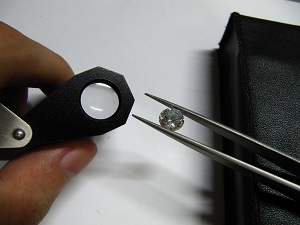
Examining a loose round brilliant cut diamond with a 10x loupe.
When viewing a GIA diamond report, clarity is an aspect that people pay the most attention to (mostly because of the plot diagram since we are mentally wired to be more receptive to images).
Clarity refers to the surface irregularities (blemishes) and internal (inclusions) features of a polished diamond. Collectively, these blemishes and inclusions are termed as the diamond’s clarity characteristics.
A flawless diamond is one with the highest clarity grade (FL), which means there are no visible inclusions or blemishes on the stone when it is examined at 10x magnification. In real life, flawless diamonds are rarely encountered as the vast majority of natural diamonds have some degree of imperfections.
Needless to say, the fewer clarity features a diamond has, the rarer it is and the more valuable it becomes. It should come as no surprise that some of the world’s most expensive diamonds have a good combination of color and clarity ratings.
In this section of Beyond4cs.com, you will find out why you need to pay attention to a diamond’s clarity characteristics and where you can find them in a GIA report. You will also see how the different types of inclusions look like and why a grading report alone is insufficient to determine the appearance of a diamond in real life.
Why is a Diamond’s Clarity Characteristics Important?
Clarity characteristics are an integral part of a naturally created diamond.
During a diamond’s formation process, the imperfections are created by a chain of chaotic events deep within the Earth and it doesn’t end there. Besides the forces of nature, rough diamond mining and polishing processes are also factors that affect the ultimate condition of the diamond.
Since no two diamonds are alike and do not have the same exact flaws in similar locations, clarity characteristics behave like fingerprints. This unique property allows you to identify one diamond from another easily.
The diamonds above have SI1 clarity ratings but both have different appearances.
Here, I want to point out that a high clarity or color rating does not guarantee a great looking diamond. Instead, the beauty of a diamond is largely determined by the cut quality it possesses.
Reference Diagrams That Depict Clarity Characterisitcs
During the grading process, clarity characteristics are identified by trained graders under 10x magnification and their locations are plotted onto representative diagrams. Blemishes (marked in green) and inclusions (marked in red) are indicated in both the diamond’s face-up and pavilion views.
Here are examples of clarity plots that I extracted from two GIA graded diamonds…
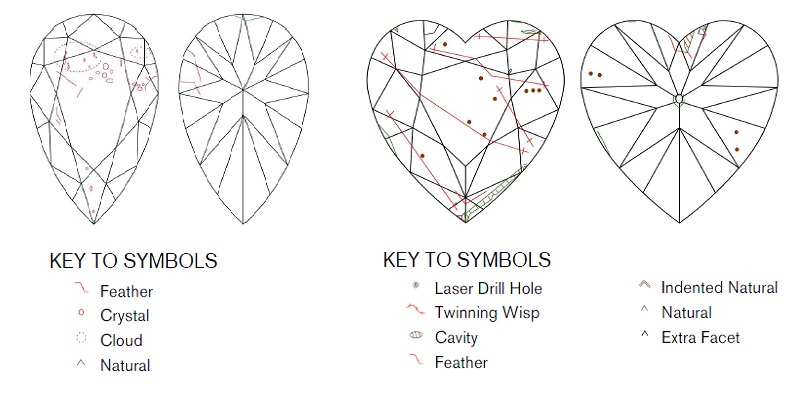
The illustrations are extracted from the following GIA reports: #2145847019 & #2145668389
For first time shoppers, clarity plots like these can look intimidating due to the messy diagrams and the different types of clarity symbols used. But don’t worry, that’s what I’m going to address shortly.
The thing is, a “clean” looking plot may not necessarily translate into a better looking diamond when compared to one with a complicated and messy plot.
To help you get a better understanding of the various types of inclusions and what they look like in real life, check out the photographs and illustrations on the following page…
Related Articles
Leave A Comment

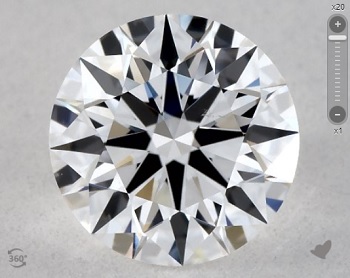
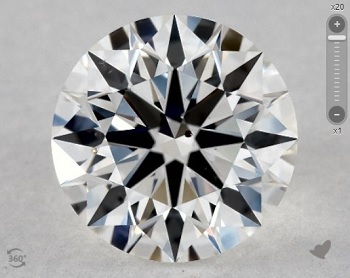
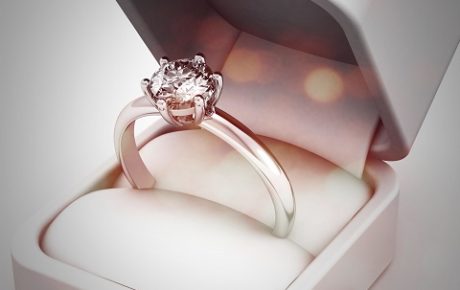
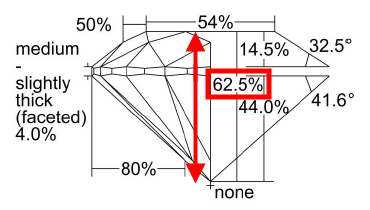
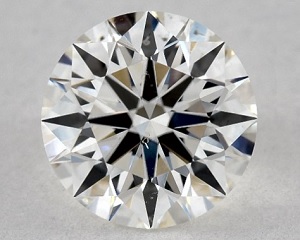










4 Comments
This is the report for a diamond I am thinking of buying. https://www.gia.edu/report-check?reportno=1203605415
It has the following inclusions listed under clarity characteristics: Twinning Wisp, Feather, Cloud, Crystal, Needle, Indented Natural
The inclusions are all white if that helps and I was told that the most prominent clarity characteristic of this diamond is the feather. The price is $6400 what do you think? is this a good price?
Sorry, no way I can offer constructive advice without more details. At such a large carat size, an SI2 clarity diamond is very likely to have significant inclusions that impact outward beauty. https://beyond4cs.com/buying-diamonds-blind/
Now, to address the 2nd question you have about the most prominent clarity characteristic, it is usually the one that is listed first. That’s the inclusion type that sets the grade. In this case, it is the twinning wisp and not the feather. As to whether it has any detrimental impact on durability or haziness, I don’t know and I need data like videos and close up images to assess that.
I have a dossier report and there is no plotting diagram. Under the inclusion section, a feather and cloud remark is listed. I’m worried about the value of the diamond I had bought and having regrets now. Are there any diamond clarity characteristics to avoid when shopping for a diamond? I heard that feathers are bad as they can cause diamonds to chip.
While it’s true that the clarity rating listed on a grading report affects the overall value of a diamond, they don’t quite tell the complete story about the stone or the imperfections look like in reality.
As for the types of diamond clarity characteristics to avoid, it really depends on a case by case basis.
This means that a feather may be a deal breaker for me if it is extremely large and at the girdle of an SI2 diamond. But a feather in a VVS2 diamond will be 100% fine! An eyeclean cloud inclusion at VS2 clarity would be perfectly OK for me but if a cloud inclusion causes haziness issues and impacts the brilliance of the diamond, it’s a No-go for me. I generally tend to avoid cavities because I’m afraid of getting dirt trapped into them. I also avoid laser drill holes as they are tell tale signs of clarity enhancement efforts.